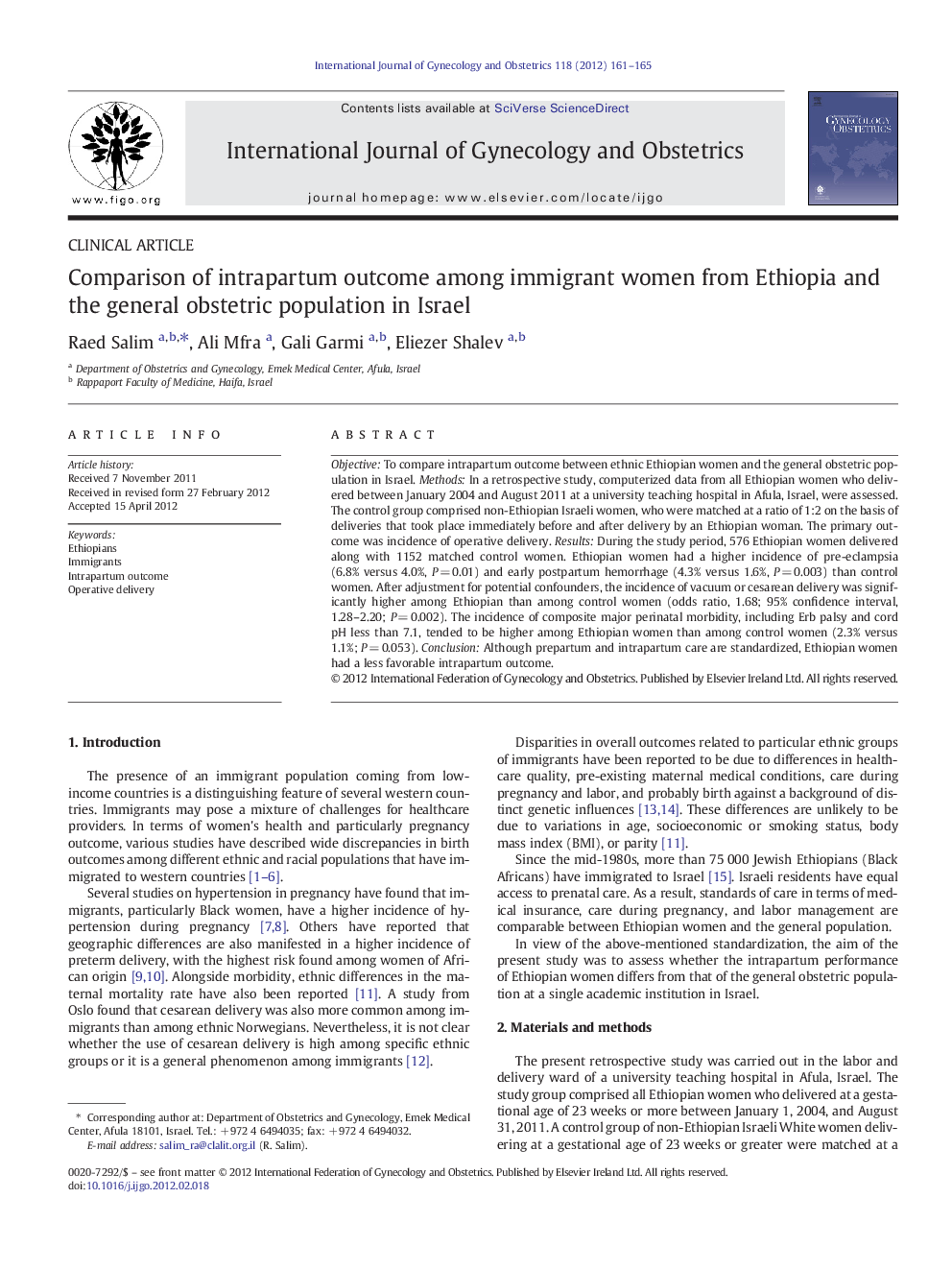| Article ID | Journal | Published Year | Pages | File Type |
|---|---|---|---|---|
| 3954353 | International Journal of Gynecology & Obstetrics | 2012 | 5 Pages |
ObjectiveTo compare intrapartum outcome between ethnic Ethiopian women and the general obstetric population in Israel.MethodsIn a retrospective study, computerized data from all Ethiopian women who delivered between January 2004 and August 2011 at a university teaching hospital in Afula, Israel, were assessed. The control group comprised non-Ethiopian Israeli women, who were matched at a ratio of 1:2 on the basis of deliveries that took place immediately before and after delivery by an Ethiopian woman. The primary outcome was incidence of operative delivery.ResultsDuring the study period, 576 Ethiopian women delivered along with 1152 matched control women. Ethiopian women had a higher incidence of pre-eclampsia (6.8% versus 4.0%, P = 0.01) and early postpartum hemorrhage (4.3% versus 1.6%, P = 0.003) than control women. After adjustment for potential confounders, the incidence of vacuum or cesarean delivery was significantly higher among Ethiopian than among control women (odds ratio, 1.68; 95% confidence interval, 1.28–2.20; P = 0.002). The incidence of composite major perinatal morbidity, including Erb palsy and cord pH less than 7.1, tended to be higher among Ethiopian women than among control women (2.3% versus 1.1%; P = 0.053).ConclusionAlthough prepartum and intrapartum care are standardized, Ethiopian women had a less favorable intrapartum outcome.
